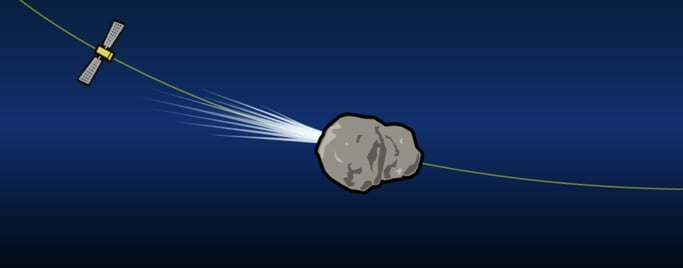
5 Easy Math Engagement Strategies for the Classroom
The news headlines are daunting. Math scores are down. School districts are scrambling to turn things around. And...
Eng. Eddier Ovando | Published October 06, 2022
Double Asteroid Redirection Test (DART) is a method of planetary defense against near-Earth asteroids, which changes the direction of a small asteroid by impacting an object sent from the earth as a satellite or space probe.

NASA's recent DART mission has dominated the recent news cycle not only for its scientific achievements but for the awe it inspires. Events like this mission serve as a fantastic tool to engage students in scientific and mathematical theories and how they can be applied in practical and awesome ways in the real world. First, let's dig into what, exactly, the DART mission is.
What is the DART mission?
DART is a spacecraft designed to impact an asteroid to change its direction. DART's target is Dymorphos, a small asteroid 170 meters in diameter, orbiting Didymos, another asteroid 780 meters in diameter. Both asteroids are classified as binary asteroids, as Dymorphos orbits Didymos. Neither threatens Earth as they are more than 1 million km away.
This asteroid system is a testing ground that will help us study whether intentionally crashing a spacecraft into an asteroid is an effective way to change its course. A successful mission would mean that if an asteroid is discovered that threatens the Earth in the future, we will know what to do.
It is important to note that no changes we make to the binary system of Dymorphos and Didymos will pose any risk to us here on Earth.
The DART mission uses an asteroid deflection method known as "Kinetic Impact" since it consists of a ship that crashes directly into the asteroid. However, the asteroid Dymorphos will not abruptly change its trajectory, rather, the impact will just slow it down a little, so that, after a long time, the asteroid's orbit will change slightly.
There are other methods to deflect asteroids, but this is the first one to be put to the test, and the results suggest that it is one of the most effective in defending the planet.
Saving the Earth!
Movies about asteroids heading to earth usually show the classic city-sized asteroid that will destroy the entire planet. Although that makes for an exciting movie, in real life, there are no longer many asteroids of that size in the solar system. Of all the massive asteroids we have discovered, none, fortunately, are headed to Earth.
However, there is a group of much smaller asteroids, such as Dymorphos that have scientists worried. The reason for their concern is that they are more challenging to detect. It is estimated that there are still many out there floating in space.
Although an asteroid the size of Dymorphos cannot destroy the world, it’s still big enough to destroy any city on the planet. Hence, the DART mission is critical to defending us from space threats so that the same thing that happened to the dinosaurs does not happen to us.
Bringing it into the Classroom
What makes the DART mission an engaging concept for the classroom is that it combines two things that interest many students: outer space, and crashing things into each other. For those teachers who already teach Newton’s Laws of Motion, the connection to DART is an easy way to connect it to current events. For teachers who are looking for effective ways to introduce these concepts into the classroom with easy-to-do activities, read on.
Colliding Objects
Preparation note: Students (individually, in pairs, or in small groups) should have access to their own materials.
Materials:

The news headlines are daunting. Math scores are down. School districts are scrambling to turn things around. And...

Math assessment in California is changing. What used to be a compliance exercise or reporting tool is now becoming a...

You know the moment: a student’s eyes light up when the science experiment fizzes or the math puzzle helps them...